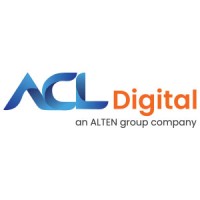Description
Description
Assists end users in resolving hardware and software issues by fielding telephone calls and email communication, diagnosing problems, and performing troubleshooting activities. Documents, tracks, and monitors the problem to facilitate a timely resolution. Relies on established guidelines and instructions to perform daily job functions. Works under immediate supervision.
Customer Assistance – Communications (20%) – Level 2, Software (15%) – Level 2, and Hardware (15%) – Level 2:
· Provides technical support by telephone, remote technology, and on-site to computer users statewide. Requests are generally logged into the computerized tracking system before escalation. Records solutions in the solutions database or other forms of documentation. Communicates to the affected parties the status of requests.
· Investigate and diagnose computer-related problems reported by division staff across the state. Assist users with unusual and more complex issues that may be referred from lower-level IS staff. Troubleshoot and resolve hardware issues. Resolving issues may involve physically repairing hardware or remotely controlling computers and contacting software or hardware vendors.
· Analyzes system performance, error codes, and diagnostic messages and resolves problems or conflicts. Installations generally have established procedures. Testing and troubleshooting are at an intermediate level. Deals with version compatibility issues, modify configurations, tests, troubleshoots, and performs significant hardware upgrades. Physically replaces cards and other hardware. Examples include bios or ROM upgrades, or flashing. Writes installation documentation and maintains knowledge library.
· Performance analysis is conducted regularly on PCs to determine system performance levels. If performance deteriorates, measures are instituted to return system performance to acceptable levels. Measures may include running Defrag or Scan disk against the hard drives or providing instructions to the user.
· Configures client software, i.e. ODBC drivers, Outlook and Exchange email access, protocols, adapters, and TN3270 host emulation.
· Creates, maintains and administers user logins to all OYA systems. Manage active directory/domain user accounts, email accounts, and security permissions for OYA users.
· Assists in educating users on the desktop system’s best practices, application, and operating system functions.
· Communicate major data system changes after determining programmatic impacts and establishing plans to coordinate any needed training or informational material.
· As a Call Center Agent, answer calls that have been routed to you because the primary Agents are unavailable.
· Assist the caller by understanding their situation and putting them in contact with the correct person who can assist them.
· If appropriate, create a service ticket for the situation before getting assistance from others.
Operations – Software (15%) – Level 2 and Hardware (15%) – Level 2:
· Hardware/software vendors are contacted not only in the arena for new products but also as a prime source of information on better utilization of current hardware and software. The information gained from vendor contacts is investigated, evaluated, and tested upon request. This technical information is then made available to all team members for decision-making. This technical information is also used to establish system defaults locally and make recommendations for department-wide utilization.
· Installations often do not have established procedures and could be the initial installation. Testing and troubleshooting are at an intermediate level. Deals with version compatibility issues, modify configurations, tests, and troubleshoots, and performs major hardware upgrades. Modifications to software may impact other software. Examples include bios or ROM upgrades, or flashing. Writes installation documentation and maintains knowledge library.
· Resolves intrusion, hacking, or virus incidents on user devices. This includes performing operating system and application patch management. Tracks operational and system changes in preparation for recovery needs.
· Plan division data system needs for PC and network development. Communicate information to managers and staff regarding department IT policies, standards, and long-range goals.
· Image new computers and reimage computers as needed according to unit standards and specifications.
· Stay on top of current trends in technology to determine future information technology needs for the division. Conduct research, negotiate with vendors, and make recommendations to management regarding IT software and hardware purchases.
· Determine PC/printer/terminal maintenance needs and establish procedures for using IT&R services or contract vendors to resolve problems promptly.
· Coordinate routine laptop computer software updates, configuration issues, and rebuilds.
· Assist in the coordination of information technology initiatives for the business unit.
· Coordinate with business units to implement desktop systems that utilize industry best practices to meet Agency objectives.
· Deploy and integrate PC, laptops, video conference systems, and peripherals to a localized user base.
· Conducts research and analysis on desktop hardware and software products to justify recommendations and support purchasing efforts.
· Applies desktop and laptop images to new systems and, as needed, refreshes a system.
· Creates detailed system test plans and coordinates and performs in-depth testing, including end-user reviews, for modified and new systems.
· Identify and resolve, when possible, compatibility issues that arise when using older lab equipment and equipment software on newer operating systems - this often requires creative thinking and the ability to formulate unique solutions
Education
Any Graduate
- Posted On: 10-Dec-2024
- Experience: 5+ years of experience
- Openings: 1
- Category: Help Desk
- Tenure: Flexible Position

